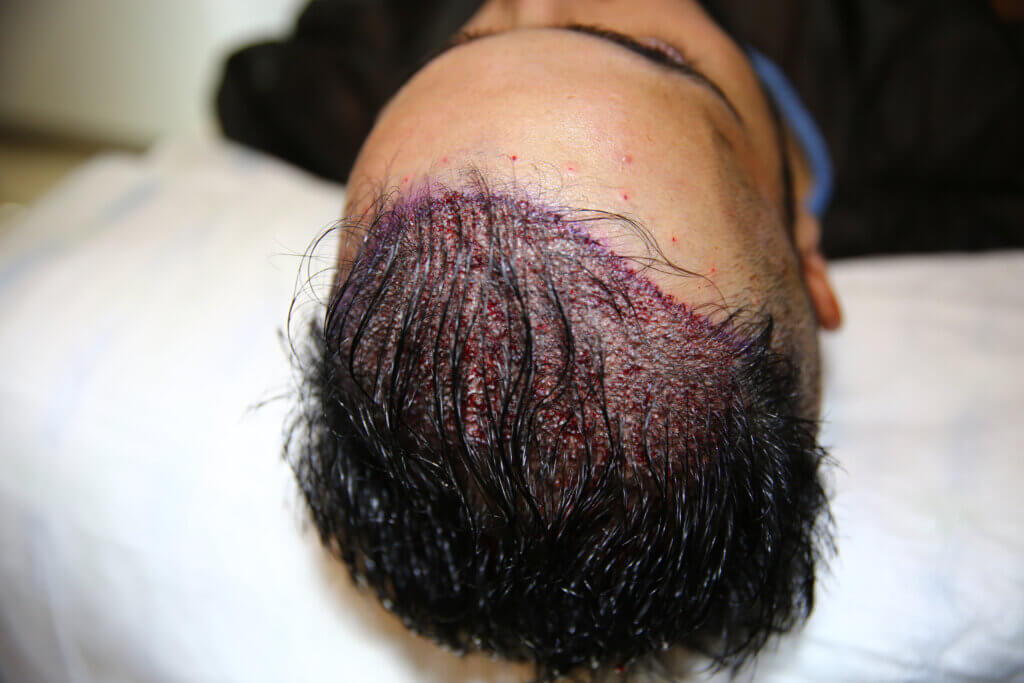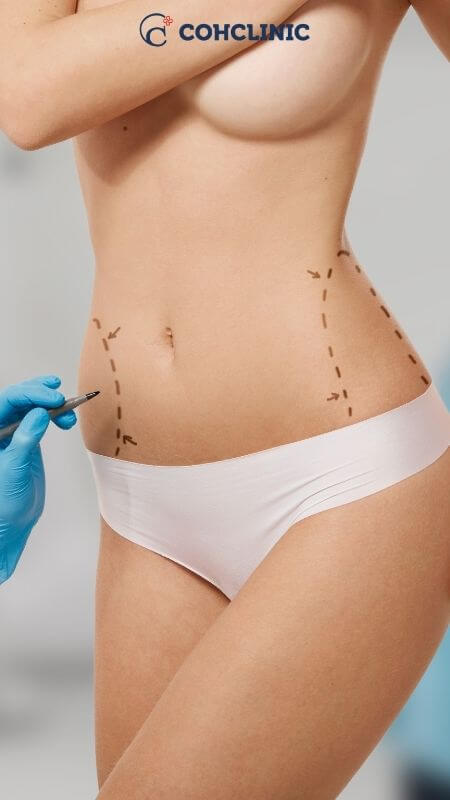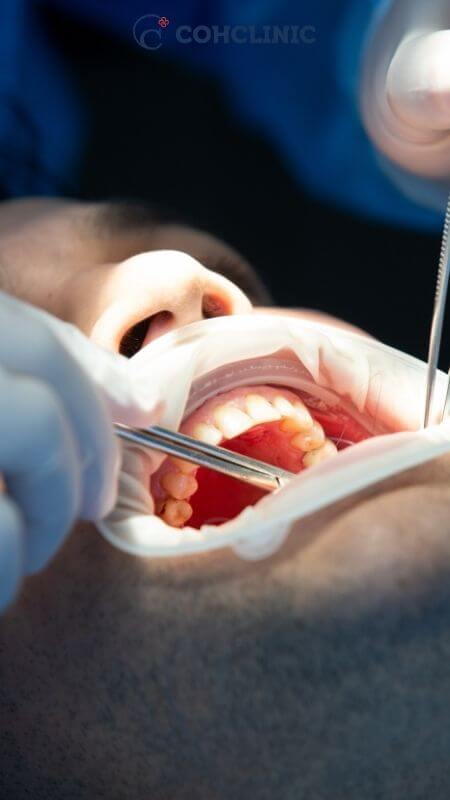There are more options for treatment now than ever before because of the new techniques created to meet various technical and cosmetic needs in hair transplantation. The finest illustration of this breakthrough and contemporary hair transplantation method is the DHI hair transplant.
What is a DHI Hair Transplant?
“Direct hair transplantation” is the abbreviation for this procedure. DHI Hair Transplantation is the removal of grafts using DHI pens and their transport to the location where hair transplantation will be carried out by qualified medical professionals. There isn’t a cut or channel opening during DHI hair transplanting. Hair roots are removed from the donor region and placed in the target area during a DHI hair transplant. In this procedure, the doctor uses a Choi pen, a specialized instrument, to inject hair straight into the desired location. This method seeks to accelerate and improve the accuracy of the hair transplant procedure.

Compared to other hair transplant procedures, DHI hair transplant often takes less time and causes less harm. It may, however, raise the risk of problems in some individuals. At this stage, the outcomes will vary based on the doctor doing the hair transplant skill and expertise. Therefore, it would be wise to examine the expertise, methods, and materials the doctor and clinic utilize before choosing hair transplantation.
DHI Hair Transplant Steps
DHI uses a similar method to FUE but is a modified form of it. In balding regions, your surgeon may transplant hair follicles from a portion of your scalp, often the back of your neck. These hair follicles will eventually stimulate the growth of new hair.
The following procedures are covered in the range of dhi hair transplantation:
- Your surgeon will trim your hair before injecting a local anesthetic.
- The surgeon will remove the back of your head’s hair follicles using a fine-tipped device.
- A pen-shaped equipment will be used to transplant hair follicles to the area of your scalp that is balding.
- The surgeon will next administer an antibiotic cream and bind any affected regions.
The length of the procedure may vary depending on the number of hair follicles, but FUE and DHI procedures typically last an average of 8 hours. The full effects of the procedure might not be apparent for 12 to 18 months.
DHI Hair Transplant AfterCare
- For the first three days, refrain from touching the recipient’s region.
- For 4-5 days, sleep on your side (or back, depending on the doctor’s advice).
- After the session, start working out again, but wait seven days before doing any hard lifting.
- For the next four weeks, please stay out of the sun (after the first four days, we advise wearing a hat). Skip the pool for 10 days and the sea for 7 days.
- Do not use the helmet for 15 days.
- For a month, abstain from using chemical products such as lack, gel, Toppik, etc.
- Don’t smoke or cut back on it for three days. While taking antibiotics (if any), avoid drinking alcohol.
- Two, six, twelve, and eighteen months following your session, we advise that you take part in follow-up evaluations.
- For the following five days, we advise donning a button-up shirt or something with a zipper.
Who is suitable for a DHI hair transplant?
Male pattern baldness, female pattern baldness, hair thinning, and hair loss are among the conditions that can be treated with DHI. Similar to the FUE procedure, it typically addresses the same phases of hair loss.
The DHI treatment is newer than FUE, and it is often advised for people under the age of 35. This is because hair loss in people under the age of 35 is not particularly advanced. And the success rates in these situations are substantially greater than in other age groups. The FUE treatment is generally safe, with mild side effects like little white scars where the follicles are extracted. Infection or tissue death may occur at the location of the surgery, even though it is uncommon in the FUE process. DHI surgery, on the other hand, allows us to implant a maximum of 4000 grafts.
You can select the size and direction of your hair’s growth during the DHI Hair Transplantation surgery based on your preferences. Additionally, no canals need to be dug. The DHI method, a process that provides a good rate for acquiring higher density, is inferior to the FUE method since it covers a smaller region. They claimed that, according to professional advice, the success rate of combined FUE and DHI was 95%. This demonstrates that whichever treatment you choose, both are quite safe.
What are the advantages of a DHI transplant?
- It produces outcomes that appear more natural.
- It is less invasive to the scalp and surrounding follicles when no incision is made.
- Due to the pen’s improved control over graft location, it can produce densities better than those achieved by conventional methods.
- As the Choi Pen inserts straight into the follicle, there is no need to open channels, saving time.
- In comparison to previous procedures, efficiency is improved by greater accuracy in the angle and depth of the implant. In comparison to 75–90%, the grafts had a survival rate of 90–95%.
- Since total hair removal is one of the most often requested procedures by patients, it is unnecessary.
What is the disadvantage of DHI?
Long-term training is provided to the doctor and other staff members so they may become experts in using this method. In general, it is more expensive than other hair transplantation techniques. During the operation, this approach calls for more accuracy and care. This procedure might make the operator anxious because of the restricted access to the surgical region, which may impair both the extraction and implantation processes and perhaps cause harm to the grafts.
DHI Hair Transplant vs. FUE
The way the grafts are transplanted into the recipient area is the most important difference between DHI and FUE. Pre-sowing channels, for example, must be opened during FUE hair transplantation so that the surgeon may manually plant the retrieved grafts.
DHI, on the other hand, employs a specialized instrument known as the Choi Implanter Pen, which allows it to be conducted directly upon extraction, without the need to first build channels for the grafts during the implantation phase. Furthermore, FUE is a graft-collecting method in which micro-motor instruments are used to open the holes where the hair is implanted in the canal, and the term of the transplantation technique is specified as FUE.
DHI vs. Sapphire FUE
The Sapphire procedure is using a sapphire blade to make incisions on the scalp and then insert grafts using forceps. There is no need for pre-made incisions with the sharp implantation technique, also known as DHI, which makes use of a hair implanter pen.
A graft implantation tool that resembles a pen is called a hair implanter pen. The graft is pushed into the skin by depressing a plunger on the implanter. The surgeon can make the recipient site and implant the grafts in one motion. Forceps are never used to manipulate the hair bulb during implantation. In contrast, the wall of the implanter pen shields the graft during implantation.
Conclusion
Overall, DHI hair transplant is a cutting-edge solution for individuals seeking effective and natural-looking hair restoration. It combines the advantages of advanced technology, minimal invasiveness, and precise follicle placement, making it a popular choice for those considering hair transplant procedures. As with any medical procedure, it is essential to consult with a qualified and experienced professional to determine if a DHI hair transplant is the right option for you.
At this point, COH Clinic is at your side with its expert team and the best price service. For all your questions, you can contact +90 (536) 934 6524.
Frequently Asked Questions
Is DHI better than FUE?
Is DHI better than FUE?
The FUE procedure may cover far bigger surface areas than the DHI method, which has a cap of 4000 grafts. This indicates that FUE cures more severe hair loss whereas DHI only treats smaller, more focused regions.
Can a DHI hair transplant fail?
Can a DHI hair transplant fail?
While hair transplantation, which is an effective and safe solution to hair loss, gives positive results in general, hair transplantation fails due to various conditions.
Does DHI heal faster?
Does DHI heal faster?
Compared to other methods of DHI hair transplantation, the recovery time is faster. With the DHI technique, it takes 3-4 days to remove the crusts on the scalp. Therefore, they return to their normal lives days after the procedure.
Does hair grow back after DHI?
Does hair grow back after DHI?
The donor region does not regrow. If the grafts are properly placed, the loss of some hair is not immediately apparent.
How long is recovery after DHI?
How long is recovery after DHI?
In DHI hair transplantation, the patient is discharged on the same day. After two days of rest, the person can return to his normal life. However, the general recovery time is considered to be 2 weeks.
Does DHI transplant leave scars?
Does DHI transplant leave scars?
Follicle extraction is performed directly on the follicle with a 1mm tip instrument. The process is minimally invasive and painless due to the use of equipment that is specifically developed to prevent injuring the skin.
Does a DHI require shaving?
Does a DHI require shaving?
Without shaving, DHI hair transplantation is possible. Choi pen is used to transplant hair follicles from the donor location straight to the receiving area. Grafts from the donor site are put in the Choi pen.
How do you sleep after a DHI hair transplant?
How do you sleep after a DHI hair transplant?
Your sleeping position after hair transplantation is very important. It is recommended to sleep on your back and facing upward.







